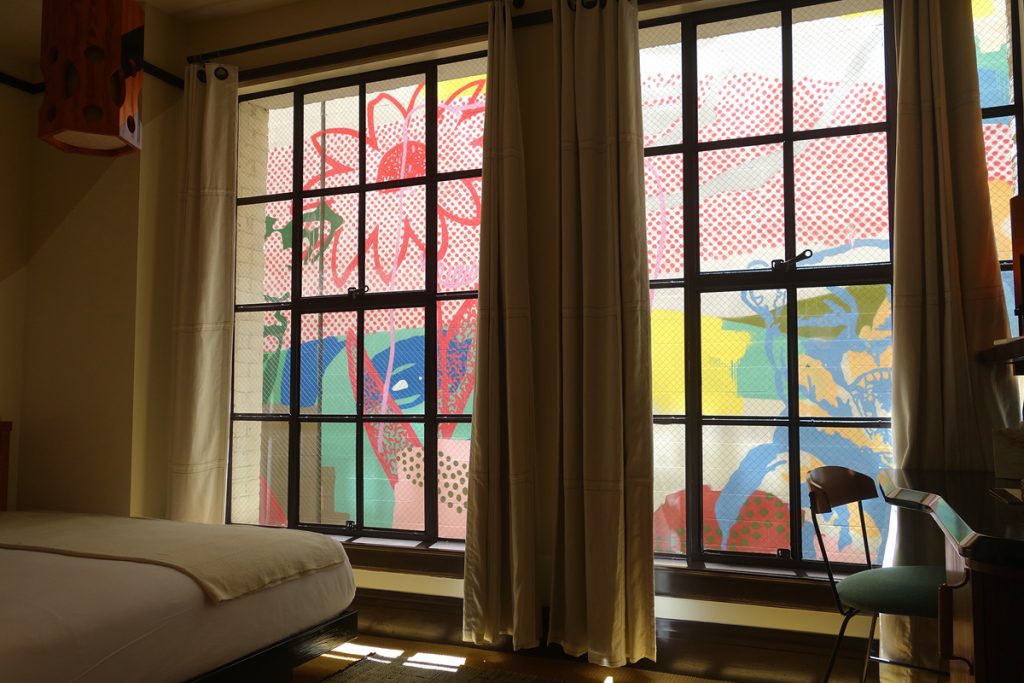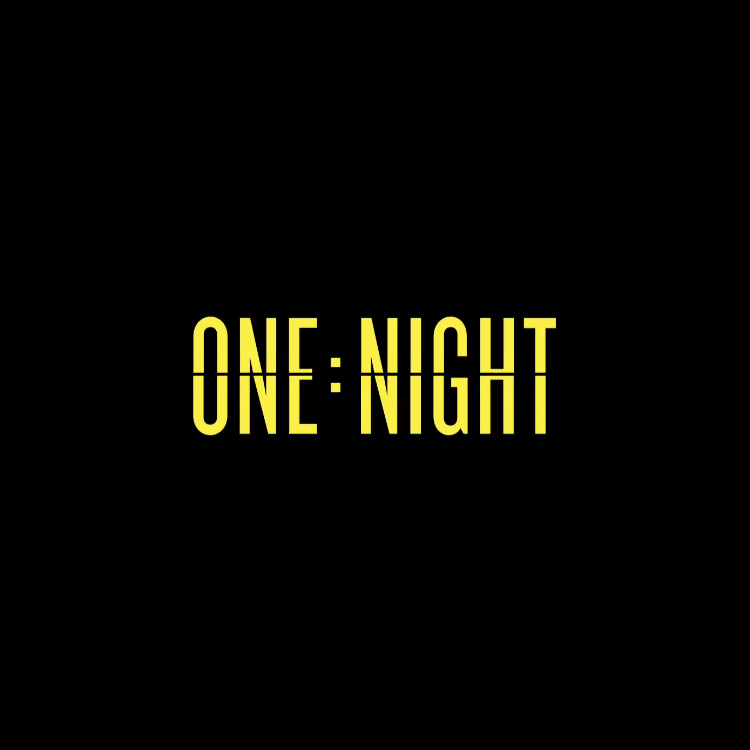A New Kind of Hybrid Hotel and Hostel: Freehand Chicago
Taking a magnifying glass to the intimate and luxe spaces designed by Roman and Williams

The Freehand Miami made waves when it first opened in 2012. The laid-back boutique hostel stuck out in the South Beach hotel scene, saturated with extravagant but oftentimes uniform options. This is the sort of thing we’ve come to expect from the developer Andrew Zobler of Sydell Group (the mastermind behind stylish, vibrant hotels with strong personalities like NYC’s NoMad and The Line Hotel in Koreatown, Los Angeles) who is continually evolving to meet the needs of today’s traveler.
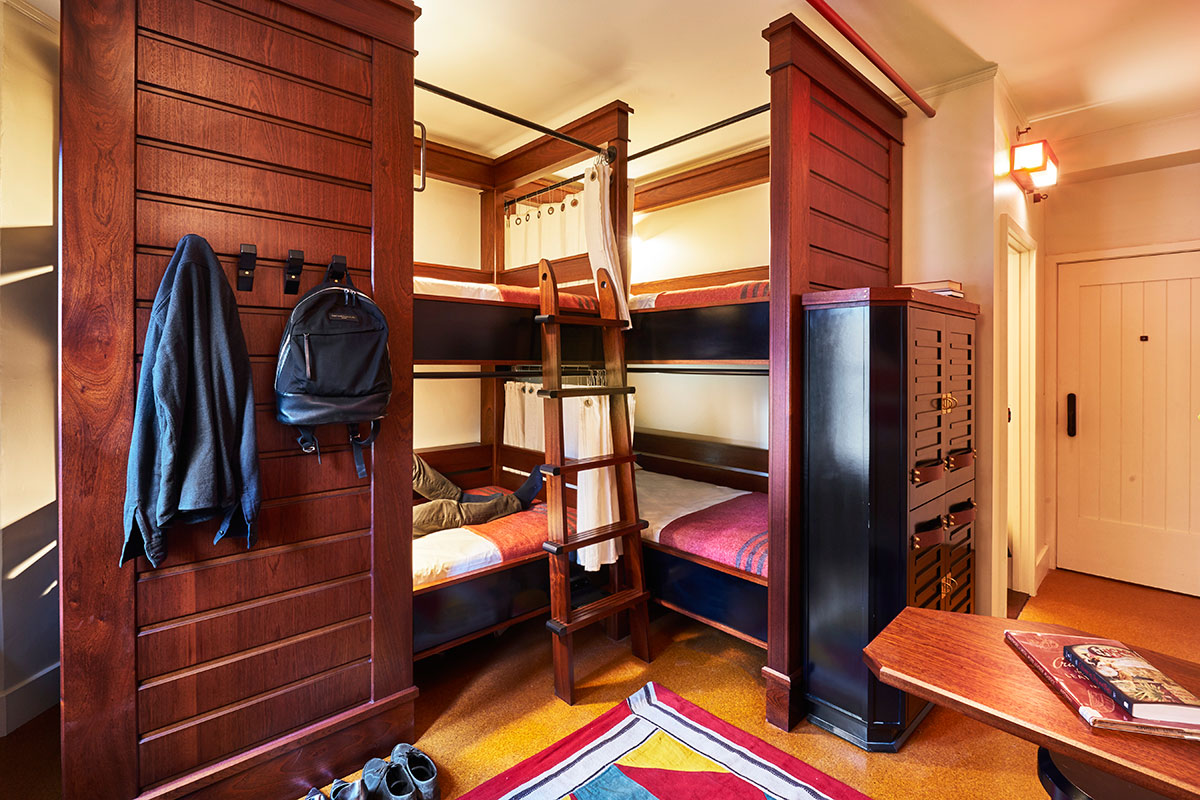
The brand’s debut made the case that affordability didn’t mean sacrificing luxury, personal comforts or beautiful design, and they’re proving it again in their second locale, this time in Chicago. The Freehand Chicago takes up residence in a fully restored 1920s Art Deco building in the urban River North neighborhood (just a block away from the relatively new and gigantic Eataly), with a mix of shared rooms with bunk-beds and private rooms—including two very special duplex penthouses—as well as food and beverage offerings that are standalone destinations on their own. In an exclusive preview of the property, we spoke with Zobler and regular collaborators Roman and Williams (the design duo behind the Ace Hotel New York, the Standard Highline and the Freehand Miami) to get a thorough look at the intricate, multi-layered design.
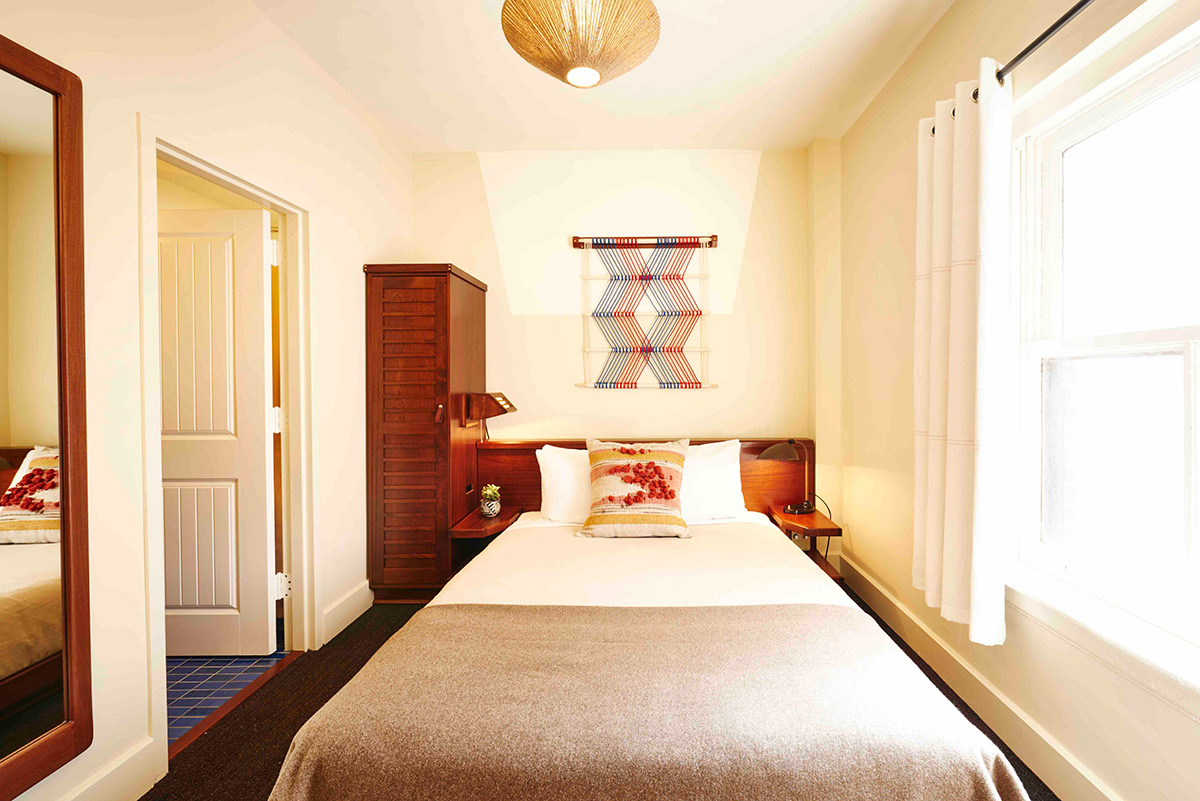
“Miami was a real learning process for us,” Zobler tells CH. “We knew instinctually that there was something really exciting about the communal spirit that you find in a hostel and we wanted to combine that with elevated design and great food and drink.” The first Freehand doubled as an experiment to find out how many people would want private versus shared rooms. “We learned that many people really wanted the communal atmosphere, but also wanted their comforts,” says Zobler. “Many wanted to socialize on property but to retreat to their own room at night, so in Chicago we have many more privates than in Miami and we have added more luxuries to all the rooms. I think the bathrooms in our rooms in Chicago (both private and shared) are, for example, pretty special with detailed millwork and custom tiles. I think they are really as good or better as you will find in many luxury hotels. So, basically, we tried to take our game up a notch.”
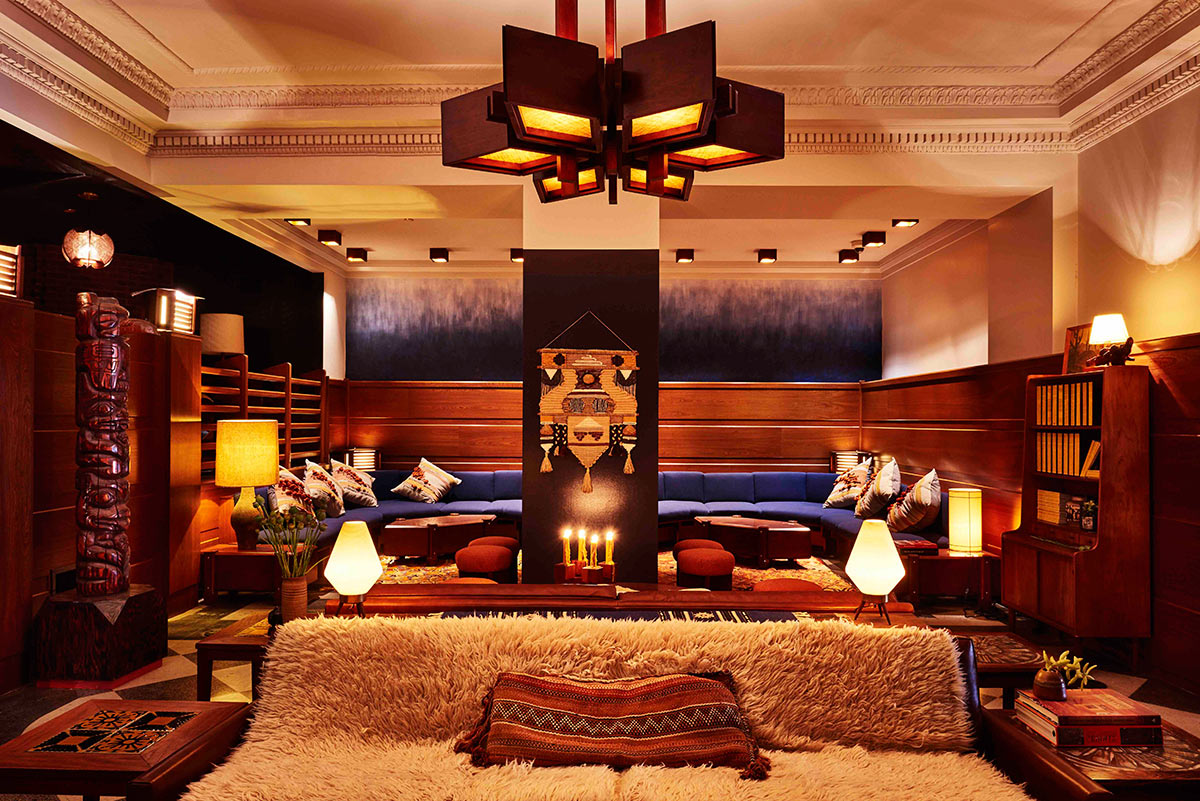
I wanted Freehand Chicago, like all of our projects at Sydell, to have a strong sense of place.
Zobler has worked with husband-and-wife team Robin Standefer and Stephen Alesch on various projects for 10 years, and their close relationship has made for a stronger, unified concept. “I wanted Freehand Chicago, like all of our projects at Sydell, to have a strong sense of place,” says Zobler. “The idea was to create a place that had the same communal sprit as Miami with great food and drink, but that felt Chicago, and would be comfortable for a business traveler. We started by using local architectural and craft references and collaborated with some great Chicagoans.”
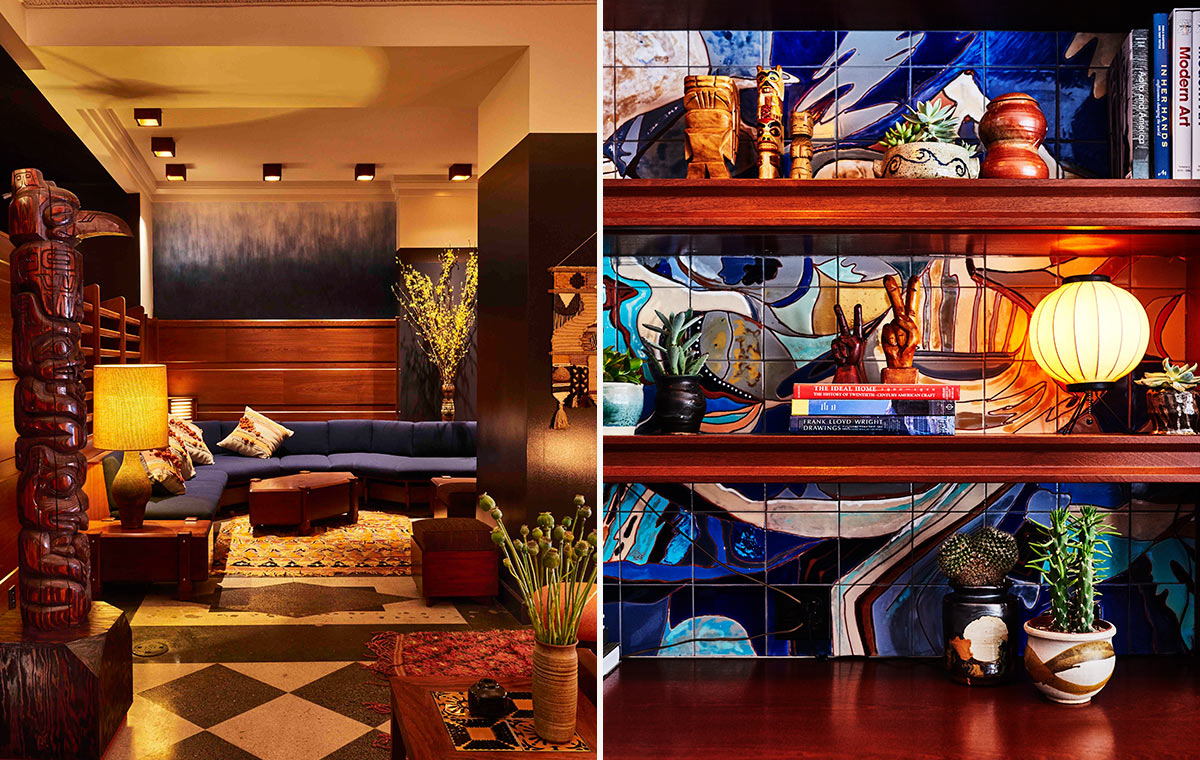
Having grown up in Wisconsin, Alesch brought in a personal touch: “One of my memories of the Midwest was the ‘den’ of my relatives,” he tells CH. “I have nice memories of warm, cozy and fun spaces where, as kids, we played endless games and parents never seemed to bother us. Dens never feel right in sunny Southern California or Miami where all one wants to be is outside—so here in Chicago it felt natural to embrace the tradition.” The mix and match of textiles, wood and leather in the lobby area makes it especially inviting for guests to hang out and refuel, instead of making it simply a space to wait.
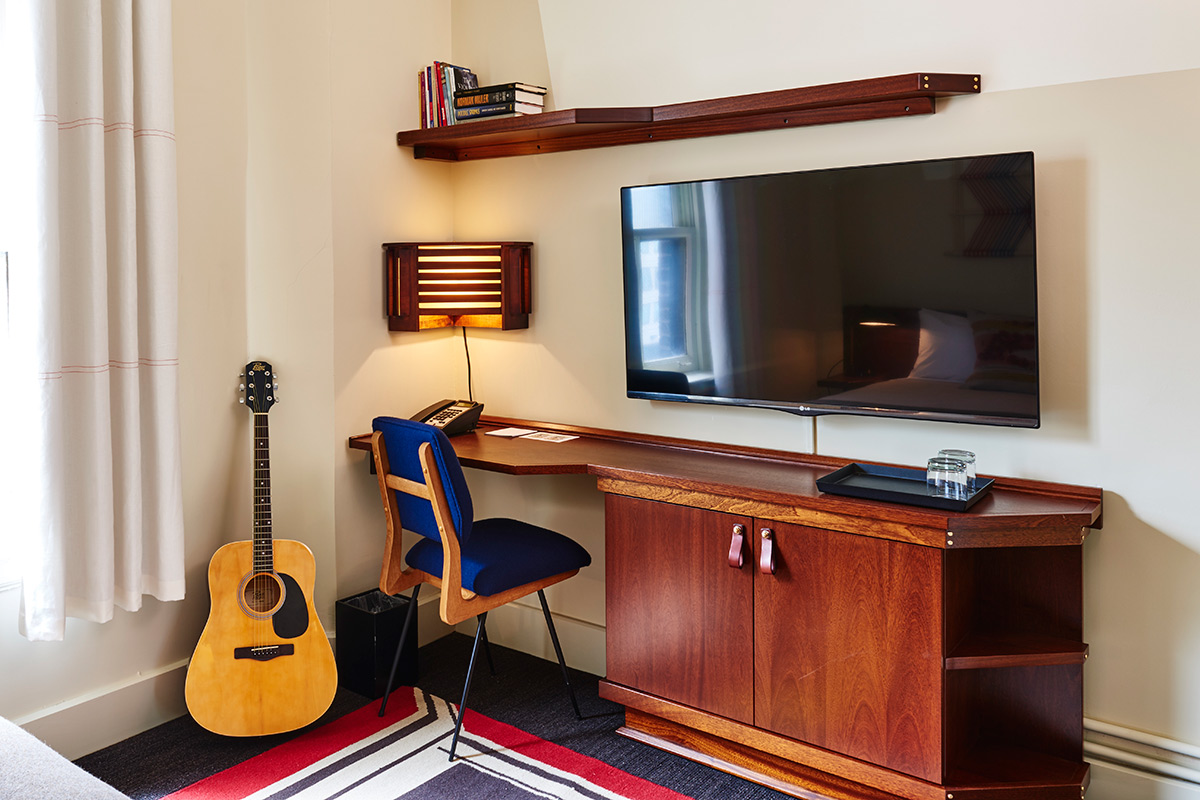
Roman and Williams thoroughly considered the different neighborhood, region, climate as well as guest demands to strengthen the aforementioned sense of place. “We embraced a very residential experience in Miami, as though you went from someone’s tropical bungalow to their backyard. At Freehand Chicago, we approached the design from a more deliberate architectural tactic, inspired by the rich history of architecture in Chicago,” Alesch says, noting the hidden order and comforting geometry found in the public spaces throughout the latter, which took inspiration from arts and crafts and Frank Lloyd Wright. “In Miami, the bunk-beds were painted bright, glossy colors and inspired by lifeguard stands, while at Freehand Chicago, we were inspired by woodworking and honest craftsmanship,” he continues. “The palette, materials and some of the motifs are different, but the DNA is the same.”

About 75% of the furniture, lighting and objects you’ll encounter have been custom-designed by Roman and Williams; they also commissioned and collaborated with contemporary artists for new pieces as well—adding a human touch to every nook and cranny. “Early on we came across this great, shaggy, very tactile pillow—verging on macramé; it’s a pillow that almost seems to hug you back,” recalls Standefer. “This oversized piece became an important reference for a family of textiles that would eventually inhabit Freehand Chicago. We were fortunate to discover Dee Clements [of Herron Clothier], an exceptional local weaver and textile artist, who shared our enthusiasm for the texture of this object and created a collection of elaborate pillows that are in every room of the hotel.”
The remaining pieces are vintage finds sourced from as close as the Midwest and as far as Marrakech—from Navajo rugs to Berber carpets to antique pine tree wallpaper from the 1940s on the walls of the bar. “The story of all of it was to evoke a sense of the nomadic and the spirit of travel the Freehand embodies,” explains Standefer.”
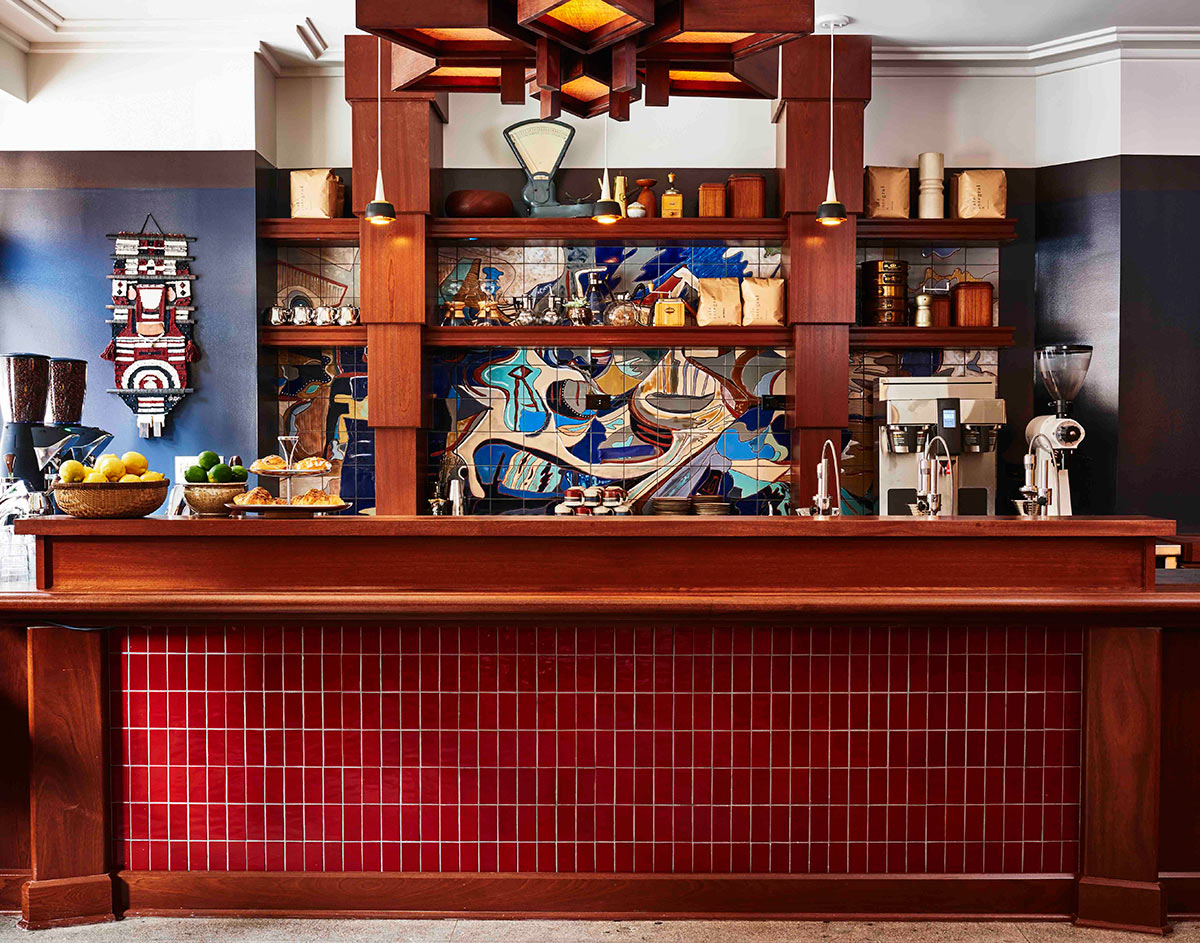
A hotel public space should be a living, breathing organism.
“Depending on location and the people, hotels have different needs for how the public spaces will breathe and function,” finishes Standefer. “A hotel public space should be a living, breathing organism. The through line in all of our projects is that we try to create a narrative that directly informs the design, to give people a certain feeling in the space. We want our spaces to feel familiar, cozy and comfortable, yet still fresh.”
Freehand Chicago is currently in soft opening and makes its official debut on 1 June 2015; beds start from $35 per night and private rooms from $159. Reservations can be booked online at Freehand Chicago. Keep an eye out for the specialty cocktail bar The Broken Shaker (its second outpost; their first in the Freehand Miami was nominated for two James Beard awards) and Café Integral, serving Central American comfort food and Nicaraguan coffee.
Images courtesy of Adrian Gaut
